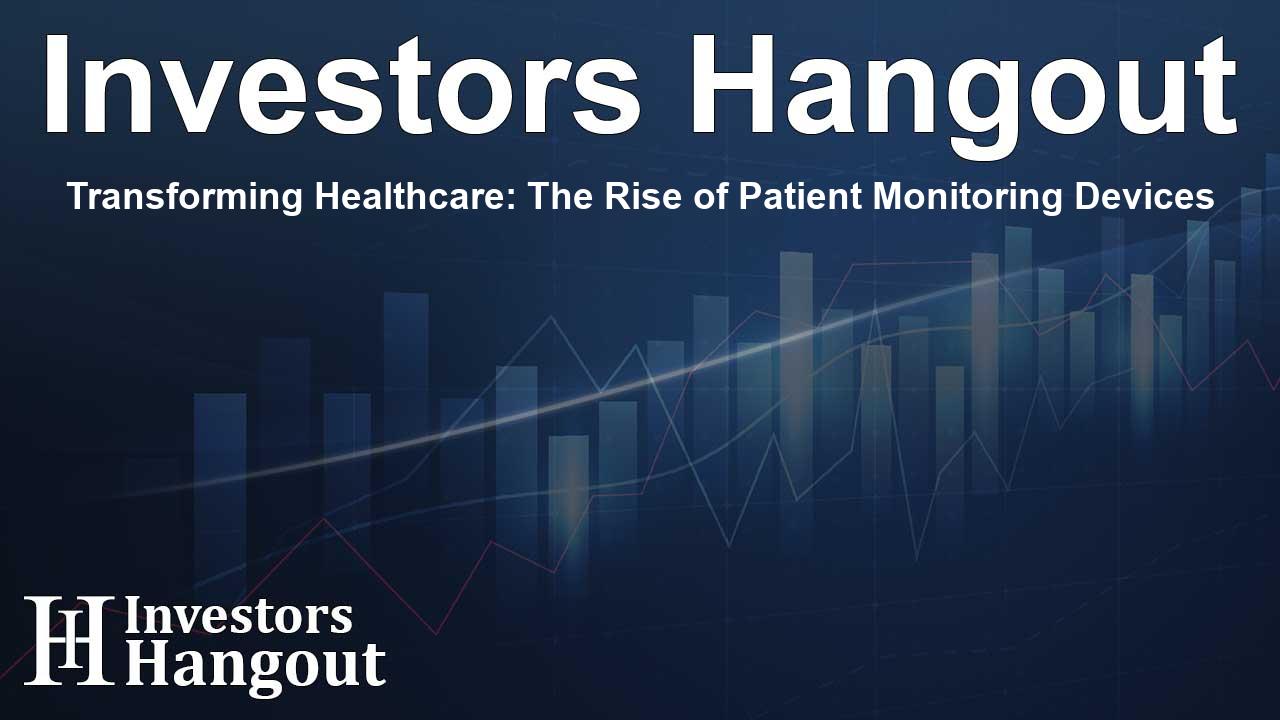Transforming Healthcare: The Rise of Patient Monitoring Devices

Revolutionizing Patient Care with Monitoring Devices
The healthcare landscape is undergoing radical changes, driven by innovations in patient monitoring technologies. The global patient monitoring accessories market has seen a remarkable uptick, fueled by advancements in medical technology, an aging population, and the growing prevalence of chronic illnesses. With projections estimating the market's growth from USD 7.83 billion in 2023 to a staggering USD 16.87 billion by 2032 at a compound annual growth rate (CAGR) of 8.9%, the future of healthcare monitoring looks promising.
Key Drivers of Market Growth
At the heart of this transformation is the increasing demand for continuous monitoring solutions. Chronic diseases such as cardiovascular conditions, diabetes, and respiratory ailments are now more common than ever. As a response, healthcare providers are adopting patient monitoring accessories like electrodes, sensors, and blood pressure cuffs, which enable real-time tracking of vital health metrics such as heart rates and oxygen levels.
Advancements in Technology
Modern patient monitoring accessories are continually evolving to meet the demands of both healthcare professionals and patients. The introduction of wireless and disposable monitoring devices not only enhances patient comfort but also aids healthcare providers in making timely interventions. For example, ECG electrodes and blood pressure cuffs are now designed with improved sensitivity to yield accurate and critical health data.
Remote Monitoring in the Spotlight
Furthermore, the COVID-19 pandemic has accelerated the need for remote patient monitoring. Many patients can now track their health metrics from home applications, significantly reducing the burden on healthcare systems. This trend aligns perfectly with the rise of telemedicine, allowing clinicians to provide continuous care without the need for frequent in-person visits.
Market Segmentation and Trends
The patient monitoring accessories market can be segmented by product type and geographical region. Key products include SpO2 sensors, blood pressure cuffs, and ECG leadwires. Among these, SpO2 sensors have emerged as the leading segment, capturing 52.6% of the market share in 2023 due to their critical role in assessing respiratory conditions.
Emerging Opportunities
As the demand for wearable monitoring devices continues to rise, patients are increasingly seeking convenient tracking solutions. With wearable sensors, smart patches, and ECG monitoring devices, users can access real-time health data, enhancing their ability to manage personal health proactively.
Investments and Initiatives Shaping the Market
Government initiatives aimed at strengthening healthcare infrastructure play a crucial role in fueling the growth of the patient monitoring accessories market. Investments directed towards enhancing healthcare services and ensuring accessible care for chronic patients have highlighted the importance of patient monitoring systems in modern healthcare policy.
Challenges in the Market
Despite the optimistic outlook, challenges such as data privacy and the high costs associated with advanced monitoring technologies remain significant restraints. Advanced solutions may be financially out of reach for smaller healthcare providers and patients in low-income areas. As digital monitoring becomes more prevalent, ensuring data security against potential cyber threats becomes increasingly vital.
Looking Ahead: The Future of Patient Monitoring
In conclusion, the expansion of telemedicine and home healthcare presents an exciting growth avenue for patient monitoring accessories. As the healthcare sector increasingly adopts digital solutions to provide better patient care, the demand for reliable and efficient monitoring devices is likely to rise. Companies like Masimo, Welch Allyn Warehouse, and Koninklijke Philips N.V. are at the forefront of these innovations, enhancing the healthcare experience through their advanced technologies.
Frequently Asked Questions
What is driving the growth of the patient monitoring accessories market?
The growth is primarily driven by an increase in chronic diseases, advancements in healthcare technology, and the demand for remote monitoring solutions.
What types of products are included in the patient monitoring accessories market?
The market includes a variety of products such as SpO2 sensors, blood pressure cuffs, ECG leadwires, and other monitoring accessories.
How has telemedicine influenced the patient monitoring market?
Telemedicine has significantly increased the demand for remote monitoring solutions, allowing patients to track their health metrics from home.
What are the challenges faced by the patient monitoring accessories market?
Challenges include high costs of advanced monitoring solutions and concerns surrounding data privacy and cybersecurity.
Which companies are leading the patient monitoring accessories market?
Key market players include Masimo, Welch Allyn Warehouse, Koninklijke Philips, Honeywell, and others who are innovating solutions in patient care.
About Investors Hangout
Investors Hangout is a leading online stock forum for financial discussion and learning, offering a wide range of free tools and resources. It draws in traders of all levels, who exchange market knowledge, investigate trading tactics, and keep an eye on industry developments in real time. Featuring financial articles, stock message boards, quotes, charts, company profiles, and live news updates. Through cooperative learning and a wealth of informational resources, it helps users from novices creating their first portfolios to experts honing their techniques. Join Investors Hangout today: https://investorshangout.com/
Disclaimer: The content of this article is solely for general informational purposes only; it does not represent legal, financial, or investment advice. Investors Hangout does not offer financial advice; the author is not a licensed financial advisor. Consult a qualified advisor before making any financial or investment decisions based on this article. The author's interpretation of publicly available data shapes the opinions presented here; as a result, they should not be taken as advice to purchase, sell, or hold any securities mentioned or any other investments. The author does not guarantee the accuracy, completeness, or timeliness of any material, providing it "as is." Information and market conditions may change; past performance is not indicative of future outcomes. If any of the material offered here is inaccurate, please contact us for corrections.